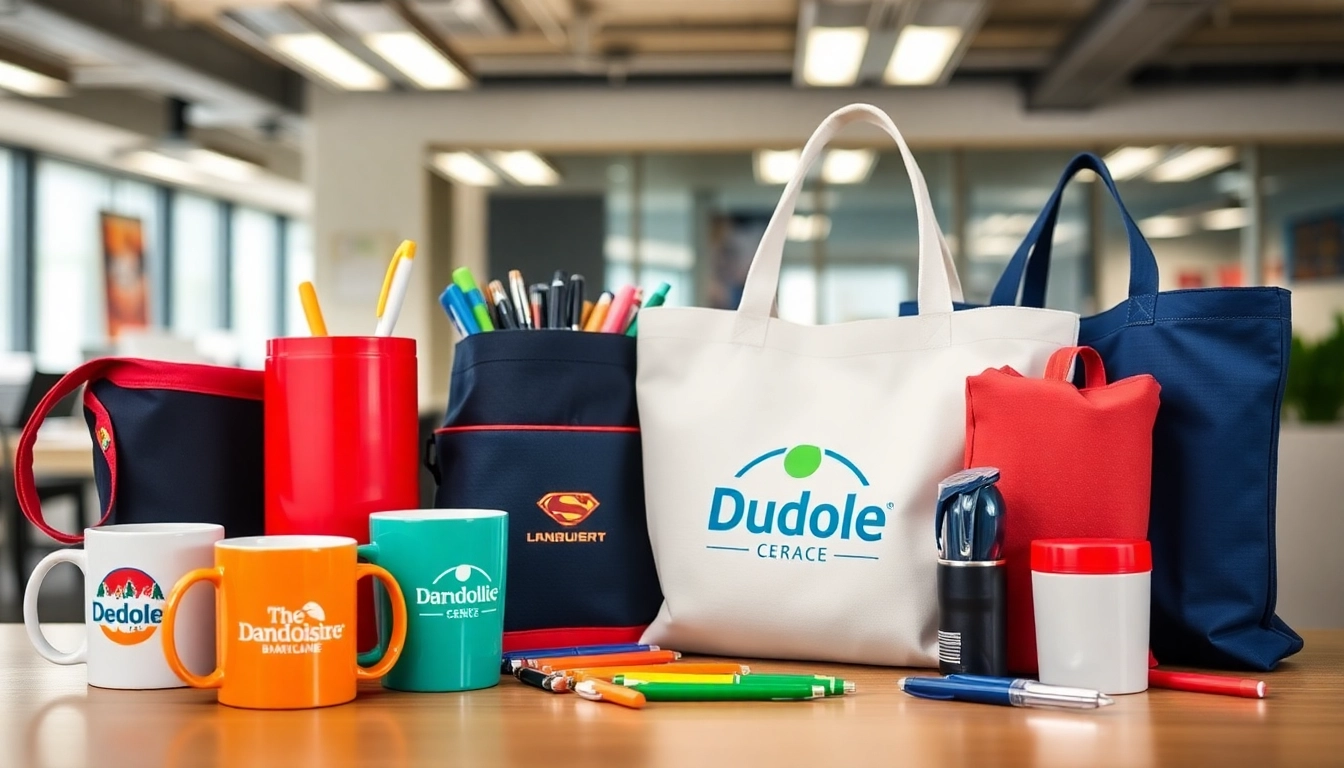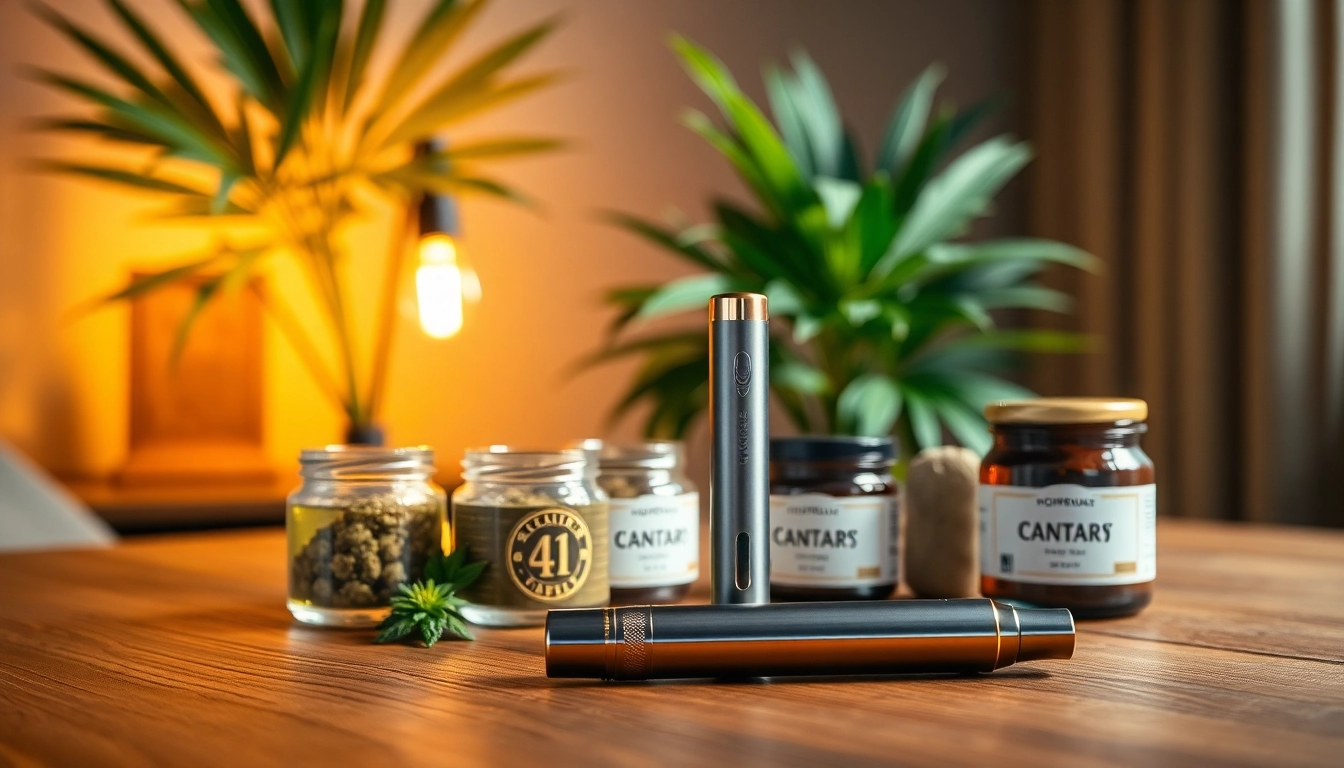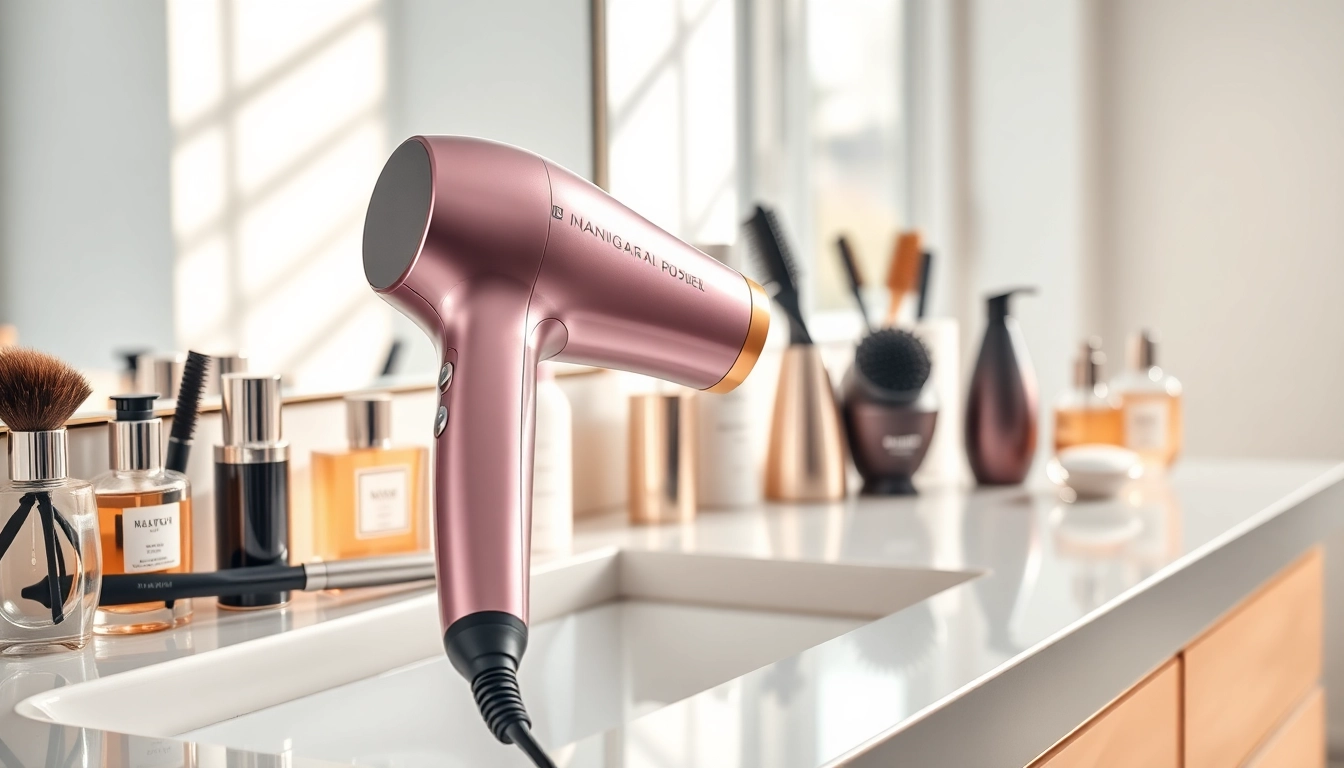
Understanding Promotional Products and Their Benefits
What Are Promotional Products?
Promotional products are branded items that businesses use to promote their brands, products, or services. These items can range from small giveaways like pens and keychains to larger items such as bags, apparel, or tech gadgets. The primary goal of promotional products is to increase brand exposure and recognition among target audiences. By incorporating promotional products into marketing strategies, companies can leave a lasting impression on customers and prospects alike.
Key Advantages of Using Promotional Products
Utilizing promotional products provides numerous benefits for businesses. First and foremost, they are a cost-effective marketing tool. Compared to other forms of advertising like TV or print ads, promotional products offer a higher return on investment (ROI).
Additionally, these items have a long shelf life. Unlike digital ads that disappear after a short time, promotional products often remain with individuals for months, if not years. This longevity ensures continuous brand exposure. Moreover, they can foster goodwill and create a positive impression of the brand. Handing out a useful item can enhance customer loyalty and satisfaction.
Finally, promotional products can be precisely targeted. When tailored to specific demographics, they resonate more deeply with recipients, increasing the likelihood of engagement with the brand.
How Promotional Products Impact Brand Recognition
Brand recognition is crucial for businesses looking to establish a foothold in competitive markets. Promotional products play a pivotal role in enhancing brand visibility. When individuals use or see these items in their daily routines, they form a mental association with the brand.
Research indicates that over 79% of people can recall the branding on a promotional product they received in the past two years. Furthermore, approximately 83% of people like receiving them, showcasing the inherent appeal of these items. By thoughtfully designing promotional products that reflect brand values, businesses can ensure they engage audiences effectively and maintain visibility over time.
Choosing the Right Promotional Products for Your Audience
Identifying Your Target Market
The first step in selecting the right promotional products is understanding your target audience. Knowing demographics such as age, gender, interests, and purchasing behavior can significantly influence your choices. For example, tech companies might benefit from distributing gadgets like USB drives or phone chargers, while outdoor brands may find success with branded water bottles or camping gear.
Surveys and customer feedback can provide valuable insights into what products your audience is likely to appreciate. This data-driven approach helps in making informed decisions that resonate with potential customers.
Factors to Consider When Selecting Promotional Products
Several key factors should be considered when choosing promotional products:
- Relevance: Ensure that the product aligns with your brand and appeals to your audience.
- Usability: Opt for items that are practical and likely to be used frequently.
- Quality: High-quality products reflect well on your brand and enhance perceived value.
- Budget: Set a realistic budget that allows for optimal selection without compromising quality.
Top Trending Promotional Products in 2023
As consumer preferences evolve, so do the types of promotional products that attract attention. In 2023, several categories stand out:
- Eco-Friendly Products: Items made from sustainable materials or designed for reuse are gaining popularity among environmentally-conscious consumers.
- Health and Wellness Products: Products such as fitness trackers, water bottles, and wellness kits tap into the growing health trend.
- Tech Gadgets: As technology advances, items like Bluetooth speakers, wireless chargers, and smart devices remain highly sought after.
- Custom Apparel: T-shirts, hoodies, and hats featuring unique designs are effective for both branding and fashion.
Designing Effective Promotional Products
Creating Impactful Designs
The design of promotional products is crucial in capturing attention and ensuring brand recognition. A well-designed product should convey the brand’s message clearly and aesthetically. Good design involves simplicity and relevance; incorporating clutter-free visuals that resonate with the target audience can enhance memorability.
Moreover, visually appealing designs encourage sharing and word-of-mouth marketing, especially on social media platforms. Collaborating with skilled graphic designers can significantly improve the quality and impact of your promotional items.
Incorporating Brand Messaging into Promotional Products
Every promotional product should effectively communicate your brand’s core message. This includes not just the logo, but the overall brand ethos. Considering the colors, shapes, and styles that represent your brand identity can make the product more impactful.
Incorporating taglines or brand slogans can also reinforce messaging and provide immediate context to the audience. A consistent and coherent message helps in creating a stronger association between the product and the brand.
Color Psychology and Its Influence on Promotional Products
Color plays a vital role in marketing, as it can evoke emotions and influence consumer behavior. Understanding color psychology can significantly enhance the effectiveness of promotional products. For instance, blue often conveys trust and stability, while red can evoke excitement and passion.
By leveraging the appropriate colors in products, brands can align with their desired messaging and connect more deeply with their audience. Conducting A/B testing on different color schemes can provide insights into what resonates best with your target market.
Best Practices for Distributing Promotional Products
Choosing the Right Events for Distribution
Selecting the appropriate platforms for distributing promotional products is essential to maximize impact. Popular events like trade shows, industry conferences, and community festivals provide excellent opportunities for engagement. Being present at these events allows for direct interaction with potential customers and makes it easier to provide product details and answer questions.
Consider also the nature of the events – smaller, intimate gatherings can create meaningful connections, while larger events may offer broader exposure. Understanding the demographics of attendees can guide you toward the most relevant types of products to distribute.
Leveraging Social Media to Boost Distribution
In today’s digital age, social media serves as a powerful platform for distributing promotional products. By integrating social media campaigns, businesses can encourage sharing and create buzz around their branded items.
Engaging content and contests can incentivize users to share photos of themselves using the products, further extending reach and visibility. Influencer partnerships are also an effective avenue, allowing brands to tap into larger audiences organically and authentically.
Measuring the Success of Promotional Product Campaigns
Understanding the effectiveness of promotional campaigns is pivotal in determining ROI and refining strategies. Metrics such as the number of products distributed, increased website traffic, and engagement on social media platforms can provide quantitative insights into success.
Furthermore, collecting qualitative feedback through surveys and customer comments can highlight areas for improvement. Establishing clear goals prior to execution is essential, as it helps to shape the evaluation process and clarify what success looks like.
Future Trends in Promotional Products
Sustainable Promotional Products: A Growing Demand
The demand for sustainable promotional products is on the rise as consumers become increasingly environmentally conscious. Organizations are now looking for ways to not only promote their brand but also demonstrate their commitment to sustainability. Eco-friendly materials such as recycled plastics, biodegradable items, and sustainably sourced materials are becoming essential considerations in product selection.
Future-focused companies are adopting sustainable practices in their promotional strategies, which not only attracts customers but builds credibility and trust among eco-aware demographics. Brands that prioritize sustainability often benefit from enhanced brand loyalty and word-of-mouth marketing in today’s socially-conscious marketplace.
The Role of Technology in Promotional Product Innovation
Technology continues to revolutionize the landscape of promotional products. From interactive tech gadgets to smart promotional items capable of tracking user data, innovation is at the forefront of consumer engagement. Wearable tech, augmented reality apps, and NFC-enabled products are just a few examples of how technology is shaping the future of promotional goods.
Innovative promotional products not only differentiate brands from competitors but also create memorable experiences for consumers. Incorporating tech features or unique functionalities can lead to higher engagement levels, ultimately driving brand loyalty.
Real-Life Case Studies of Successful Promotional Product Campaigns
Examining successful promotional product campaigns can provide valuable insights into effective strategies. One notable example is Coca-Cola’s “Share a Coke” campaign, where the company replaced its iconic logo with popular names on their bottles. This personalized approach encouraged customers to seek personalized bottles, sparking a social media frenzy and significantly boosting sales.
Another example is Dropbox, which famously distributed branded T-shirts alongside tech gadgets during its early startup phase. These products served both as incentives for sign-ups and as marketing tools, creating strong brand recognition in a crowded sharing economy.
These case studies highlight the importance of creativity, audience understanding, and strategic distribution in crafting successful promotional product campaigns.






